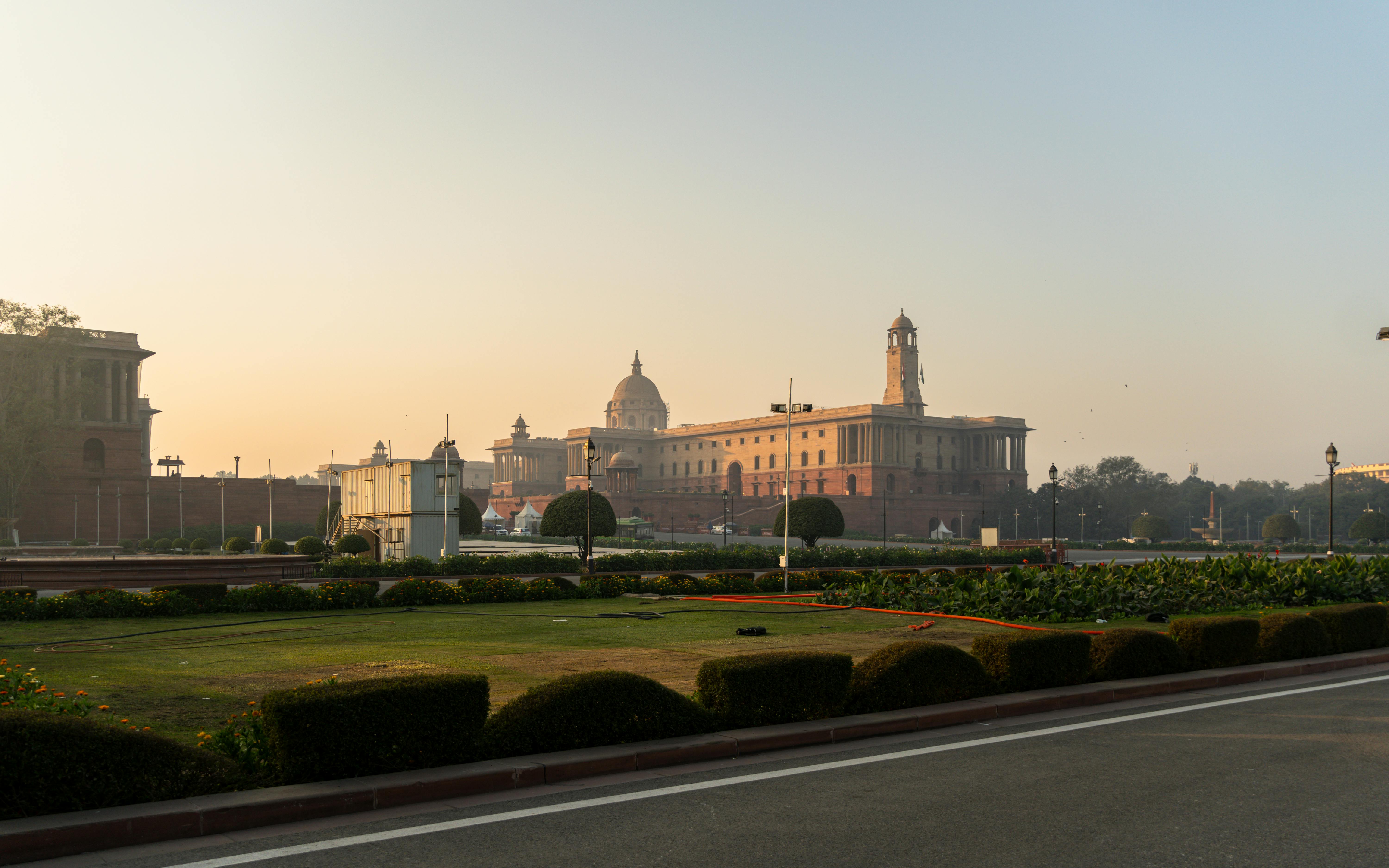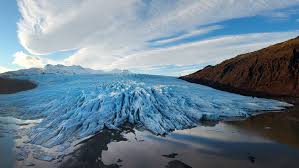Will Climate Change allow India to hold another summer elections?
The voting is taking place in seven phases between April 19 and June 1 where nearly 97 crores people are expected to exercise their voting rights. As Elections enter the key phase at the beginning of May, the temperatures have also started peaking.
By Editorial Team / May 10, 2024

Stock Photo
India has been sweltering under unprecedented heatwaves ever since the beginning of the summer season in April; more pronounced in east and peninsular India than in the north and northwest of the country. These extreme heatwaves have coincided with India’s General Elections 2024, a two-and-a-half-month electoral process.
The voting is taking place in seven phases between April 19 and June 1 where nearly 97 crores people are expected to exercise their voting rights. As Elections enter the key phase at the beginning of May, the temperatures have also started peaking.
Sheer temperature and humidity will increasingly make it harder to work in the open and India’s ongoing election process has shown how much the complexities of weather and climate impact the voting and canvassing process. play into when the Indian elections are held in the future.
What led to intense Heatwave in India
State-run India Meteorological Department (IMD) had already predicted more than double the average heatwaves during April-June, i.e. 10 to 20 days of heat waves against a normal of 4 to 8 days to be precise. The heat this year is expected to be worse than in 2023, which has been the warmest year on record to date.
Mercury has been settling between 42-45 degrees, even soaring to 47 degrees in some parts of the country. April has seen one of the longest spells of heatwave extending up to 15 days. Parts of East and Peninsular India have been the worst hit, which are also battling humidity. Kerala is under a record heatwave and has reported 10 deaths due to heat stress while waiting in voting queues. According to the Kerala State Disaster Management Authority (KSDMA), around 413 heat-related health issues like sunburn, rashes, and heat stroke cases have been reported until April 22. Odisha has also recorded one death and around 124 have been hospitalised due to heat-related illnesses across 16 districts.
Maximum temperatures across India show large parts of the country in a large red mass, indicating above-normal day temperatures over most parts of the country.
The unprecedented rise in temperatures can be attributed to the absence of pre-monsoon rain and thundershowers during April. With this, countrywide cumulative rainfall was deficit to the tune of 20%. Rainfall during April 2024 over South Peninsular India (12.6 mm) was the 5th lowest since 1901 and the 2nd lowest since 2001. This was followed by East & Northeast India which was deficit by 39%.
According to Climate Central, a US-based organisation working on climate change, day temperatures were at least twice as likely because of climate change. The temperature conditions in the southern half of the country had a much stronger climate change influence (Figure below, right). The fingerprint of climate change is especially apparent along both coasts.
In coastal areas, 37°C is commonly used as a threshold for dangerous heat. This temperature occurred throughout most of the country, including along the eastern coast. Thirty-six out of 51 major cities had three or more days above 37° since the start of the election season (April 19-April 30), and 18 cities had more than three days above 40°C.
“Heatwaves in India are by far the deadliest type of extreme weather events. At the same time they are the type of extremes most strongly increasing in a warming world. As long as the world continues to burn fossil fuels, events like these will become an increasingly common disaster,” said Dr Friederike Otto, Scientist and Senior Lecturer in Climate Science at the Grantham Institute for Climate Change and the Environment.
Can India’s election dates be shifted to suitable weather conditions?
Considering the situation, the Election Commission of India (ECI) took necessary action by constituting a task force to deal with the impacts of the intense heatwave on voters. This task force comprises officials from ECI, IMD, NDMA (National Disaster Management Authority), and the Federal Health Ministry. However, experts argue that these measures have a limited impact, questioning the timing of elections.
The last two general elections in India in 2014 and 2019. overlap the hot decade Global average temperatures had reached close to 1°C in 2014, while 2019 saw a sharp rise with the mercury soaring beyond 1.2°C.
Climate scientists have put India in a high-risk category from severe heatwaves. Terrestrial heatwaves are projected to increase by six-fold in this region if emissions continue—which raises concerns for the vulnerable population that is projected to reach 1 billion by 2050. The current weather trends are making everyone question if there is a provision that allows the ECI to conduct elections during more conducive weather in the year.
Being a democratic nation, India holds Parliamentary elections every five years. As per the Constitution of India, the ECI has a six-month window before the 5-year tenure ends to conduct union elections. Simultaneously, state-level elections are also scheduled in those years.
Ashok Lavasa, Former Election Commissioner of India cited an instance in 1951 when the Lok Sabha Polls for upper areas of Himachal Pradesh were conducted in September, while the rest of the country voted during October. This was done as the upper reaches of Himachal Pradesh would have been engulfed in snow during elections which were scheduled from October to December. He suggested that it is possible to amend election dates up to an extent but it would need serious consideration of other factors as well.
“Weather conditions are always taken into account to avert major disruption. There are mitigation measures which are taken well beforehand like arrangements for making people stand in queue in cool places, availability of drinking water, etc. There is a provision by which the ECI can conduct elections anytime in 180 days but they have to be extremely careful that the term of the government is not curtailed even by a day. Another problem is that the month of February-March is exam time in schools and colleges so one cannot disrupt the academic cycle as well. Maximum precautions are taken to minimize the extremes. However, one may consider this, if (temperatures) continue to increase,” said Ashok Lavasa, Former Election Commissioner of India.
Citing similar views, O P Rawat, Former Chief Election Commissioner suggested that this problem could be solved by mutual understanding among all the parties. He suggested, “There is a six-month window to hold Parliamentary elections. For the current tenure, elections had to be held between 17 December 2023 and 16 June 2024. However, since state assembly elections were scheduled in November and December, Parliamentary elections are usually conducted after a gap of at least 2-3 months. Therefore, union elections in 2024 were announced in March. To avoid such a situation in the future, the election commission must call for an all-party meeting where it can collectively agree on delaying the state elections by two months and hold the parliamentary elections during the 6-month window. Now for the next general elections in 2029, the window falls between January 1 and June 30. Spring season (February and March) is the best time to hold the elections. Or else, there should be an amendment in the law that empowers the Election Commission to conduct a state assembly election a little earlier.”
Whether there is a correlation between higher temperature and lower voter turnout remains a debate, but scientists are confident that the impact of increasing heat stress cannot be ignored.
The need to integrate impacts of climate change in policy-making
Heat waves have claimed more lives in India than other natural hazards, except tropical cyclones. According to the Sixth Assessment Report of the Intergovernmental Panel on Climate Change (IPCC), human-caused climate change has increased the frequency and intensity of heatwaves since the 1950s and additional warming will further increase their frequency and intensity.
Recent years have witnessed heat-related deaths even in conditions with ambient temperatures less than the threshold criteria of the operationally monitored heatwaves over the Indian region as well. This is on account of increased moisture content due to the warming of oceans.
Severe heatwaves can exacerbate chronic health conditions, vector-borne diseases, air pollution, droughts, and other socio-economic pressures causing higher mortality and morbidity. Heatwaves with severe consequences have increased and are expected to become more frequent in Indian climatic and geographical conditions. As per the future projection studies, the temperature could rise ±1.2° C to ±3.5° C and will start reducing by the end of 2050.
Heatwave Elections India Climate Change

